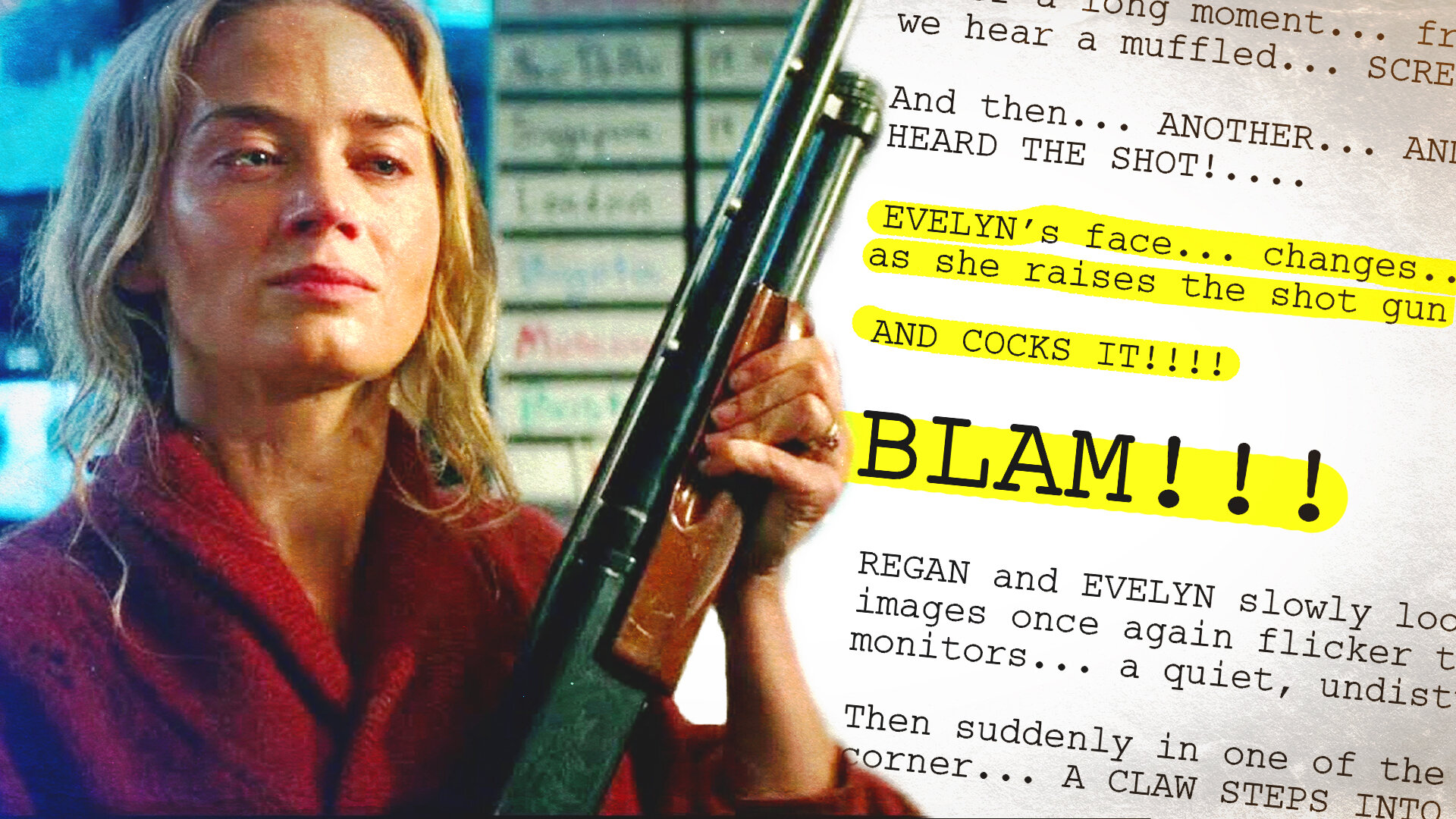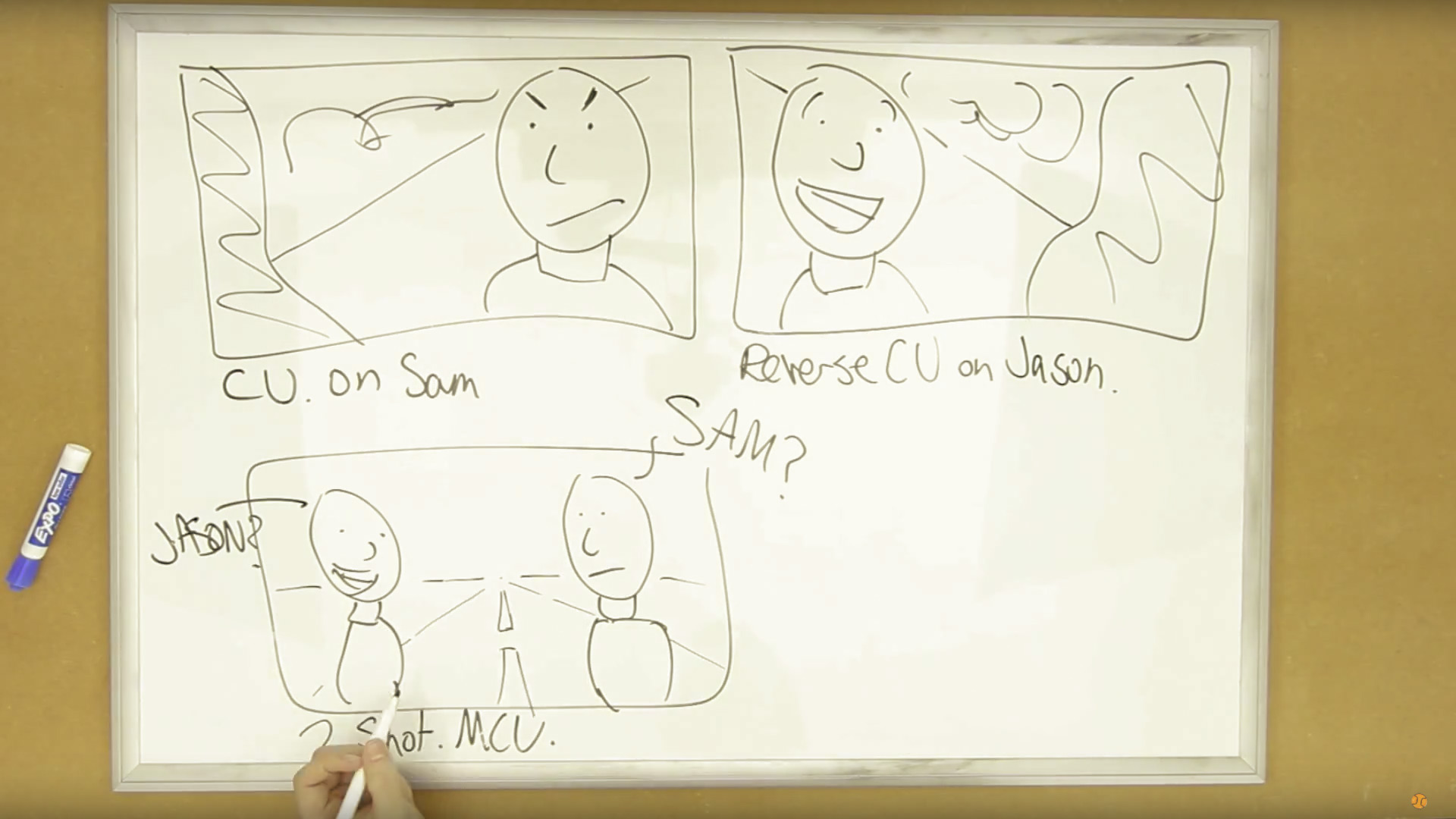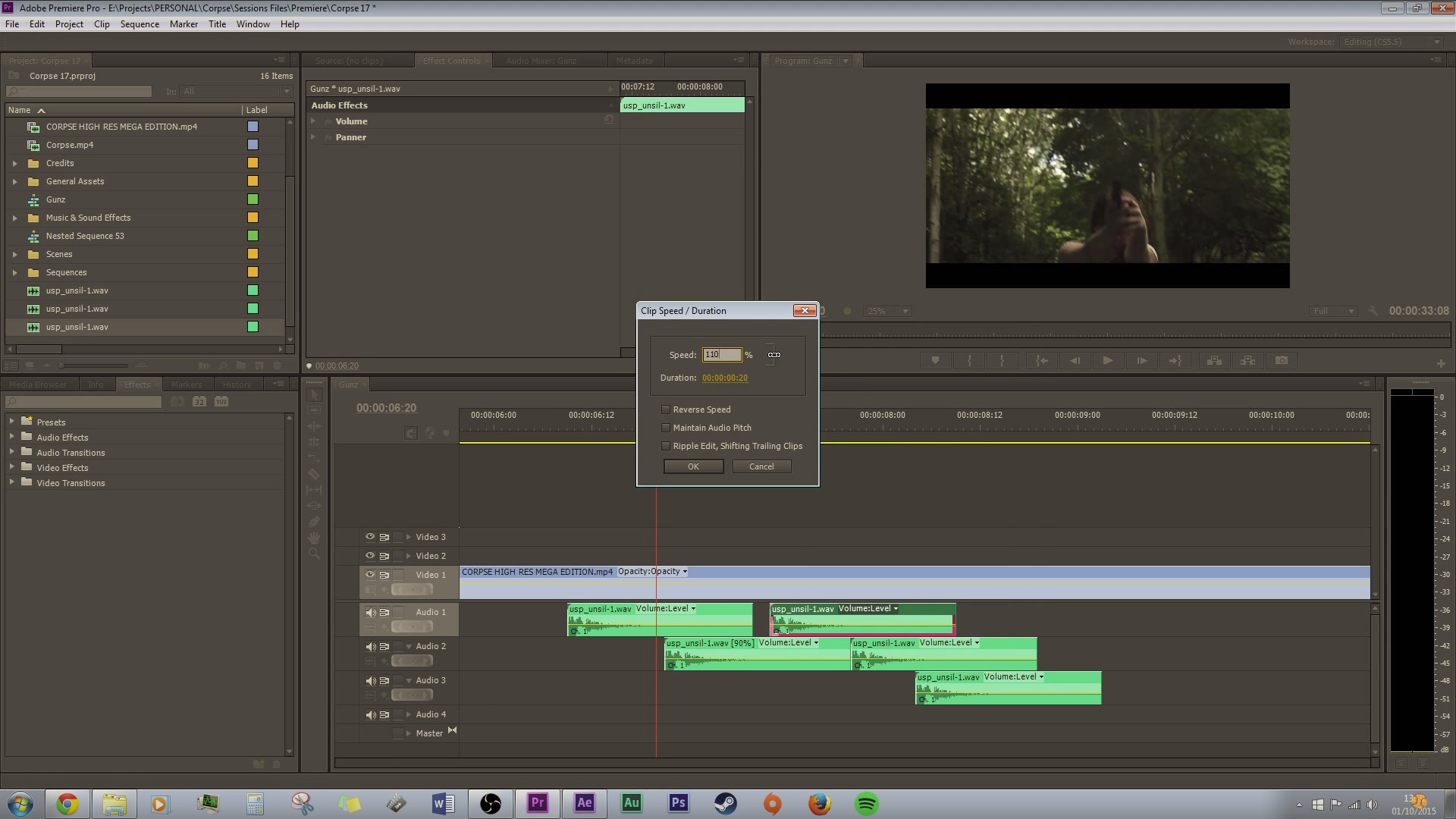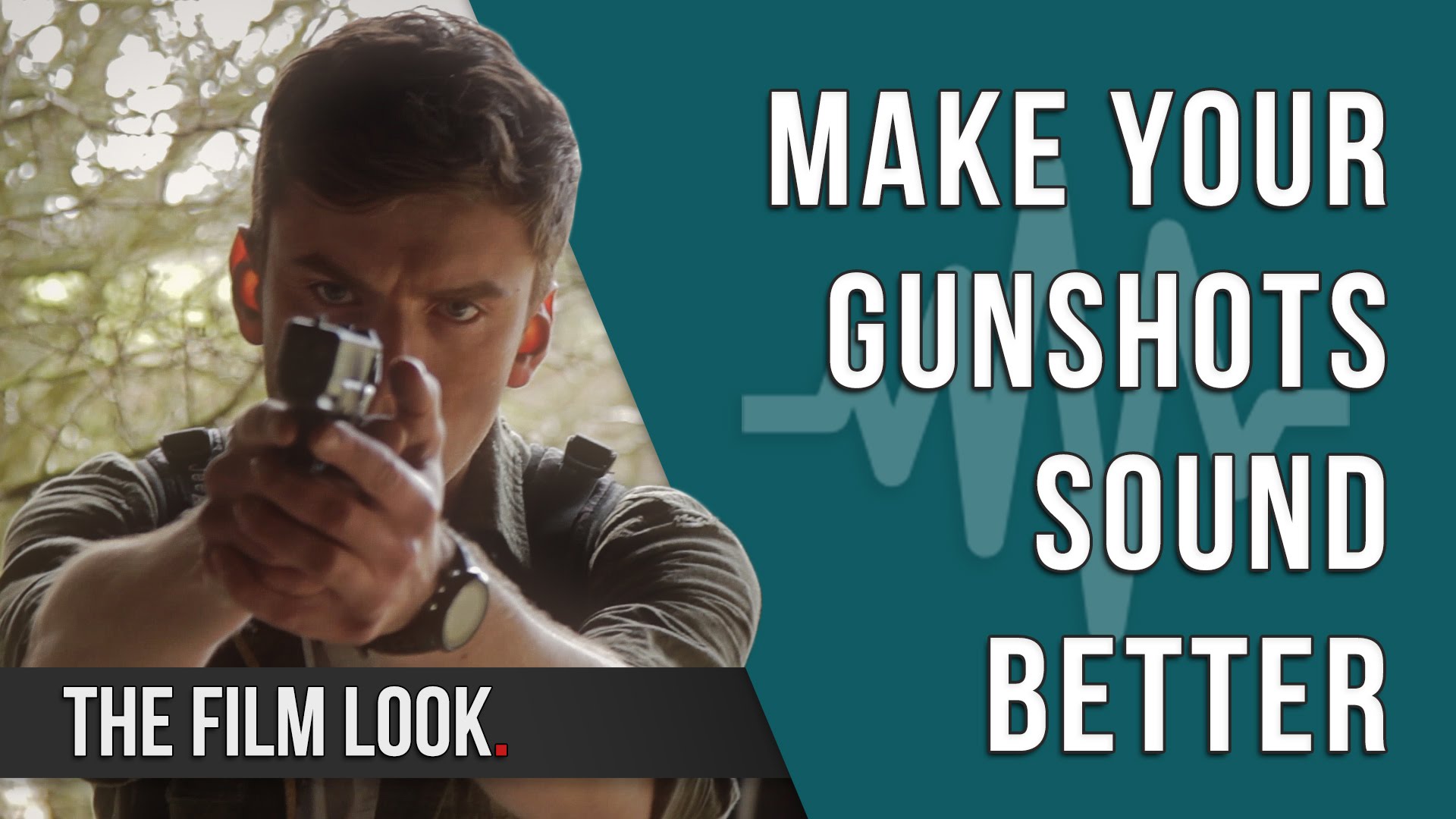A scene in our recent short Corpse requires a guy getting his head kicked in.
Now WE follow the rule of "working with the resources you have in the best possible way", and getting a fake head to stand on, or doing it with VFX was going to cost a lot of time and money. So instead, we decided we wouldn't show it at all.
Now we could have shown his head being caved in, but what would that achieve? A cheap gimmick, a shock horror moment, sure.
But the story would be the same, so what's the point?
Anyway, here's how we did it.
Try to record audio in the original location. If you can't, find a similar alternative. We shot the scene in forest, but we recorded in my back garden.
They were both outside, the wind levels were similar, and there was very little background noise.
We used bell peppers to get a good crunch for the skull crushing sound, and used a water melon for the juicy brain sounds. It had also been in the back of my fridge for a very long time, so it went REALLY juicy!
Also...before you start standing on them, don't wear your favourite green chinos like Rob did. It's messy stuff.
I cut up the best sound effects and matched them with the foot stomps. For added brute force, I added a punch sound effect to every kick and stomp. And finally for extra ambience, I added some thunder in the background.
And there you have it. A cheap and effective way to smash your friends skull in!
You can find the sound effects from this video in our store to download for free.
DISCLAIMERS:
Some of these links are affiliate links, if you purchase gear via these links The Film Look will receive a small commission, but there will be no additional cost to you. Thank you!















